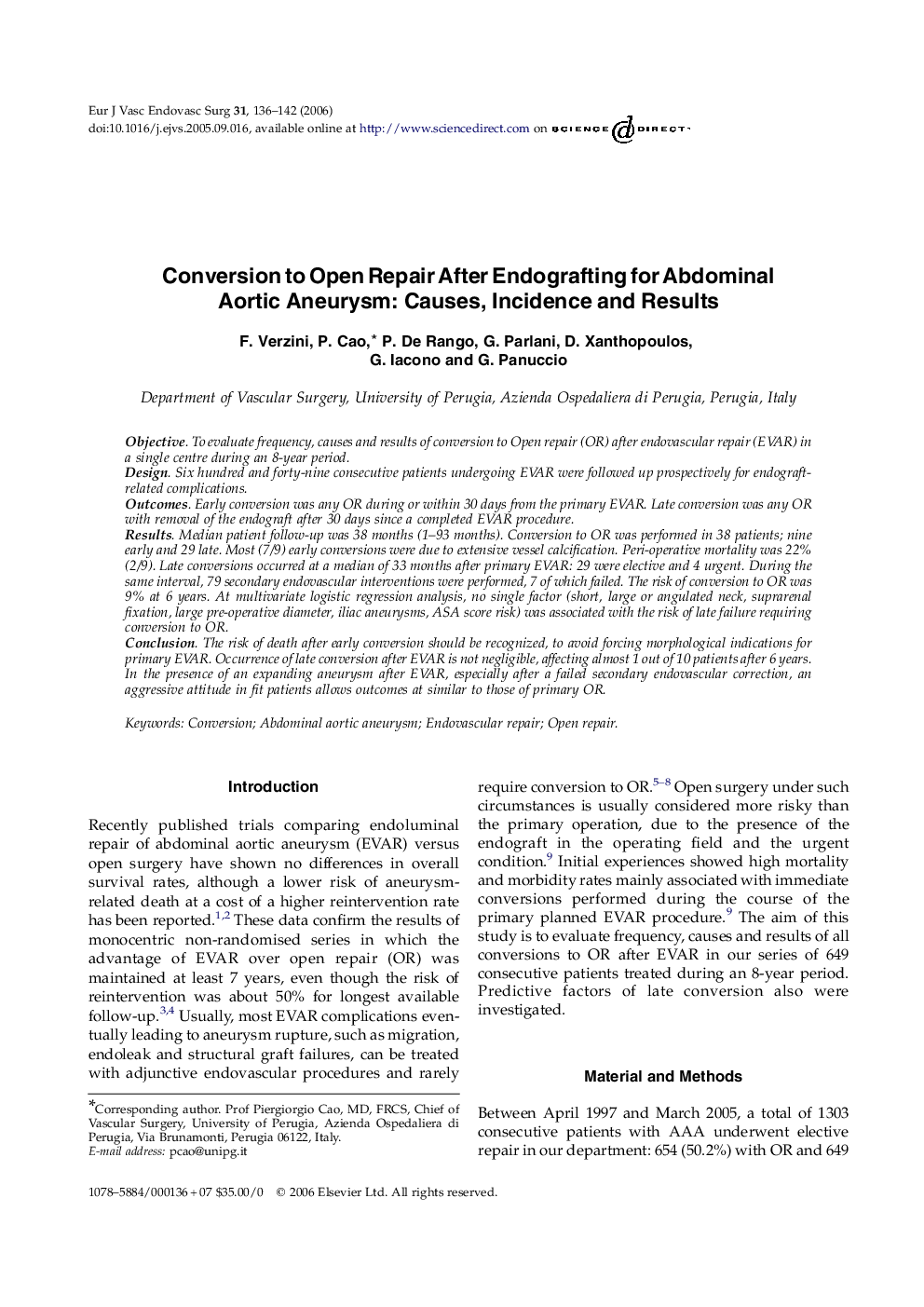| Article ID | Journal | Published Year | Pages | File Type |
|---|---|---|---|---|
| 2915230 | European Journal of Vascular and Endovascular Surgery | 2006 | 7 Pages |
ObjectiveTo evaluate frequency, causes and results of conversion to Open repair (OR) after endovascular repair (EVAR) in a single centre during an 8-year period.DesignSix hundred and forty-nine consecutive patients undergoing EVAR were followed up prospectively for endograft-related complications.OutcomesEarly conversion was any OR during or within 30 days from the primary EVAR. Late conversion was any OR with removal of the endograft after 30 days since a completed EVAR procedure.ResultsMedian patient follow-up was 38 months (1–93 months). Conversion to OR was performed in 38 patients; nine early and 29 late. Most (7/9) early conversions were due to extensive vessel calcification. Peri-operative mortality was 22% (2/9). Late conversions occurred at a median of 33 months after primary EVAR: 29 were elective and 4 urgent. During the same interval, 79 secondary endovascular interventions were performed, 7 of which failed. The risk of conversion to OR was 9% at 6 years. At multivariate logistic regression analysis, no single factor (short, large or angulated neck, suprarenal fixation, large pre-operative diameter, iliac aneurysms, ASA score risk) was associated with the risk of late failure requiring conversion to OR.ConclusionThe risk of death after early conversion should be recognized, to avoid forcing morphological indications for primary EVAR. Occurrence of late conversion after EVAR is not negligible, affecting almost 1 out of 10 patients after 6 years. In the presence of an expanding aneurysm after EVAR, especially after a failed secondary endovascular correction, an aggressive attitude in fit patients allows outcomes at similar to those of primary OR.
